This stovetop rice pudding is a classic treat you can whip up in no time. You only need some pantry staples and no special equipment to make this dessert. This old-fashioned dessert is an easy and inexpensive recipe to use up any extra rice you have lying around.
Perfectly sweet and so nostalgic, this humble but delicious rice pudding dessert will warm you from the inside out on a cold winter evening. However, you can enjoy this treat any time of the year as you can serve it hot or cold. Want another easy pudding-type dessert? Try my sticky toffee pudding recipe, banana pudding recipe, or bread pudding recipe.
What You Need to Make This Recipe
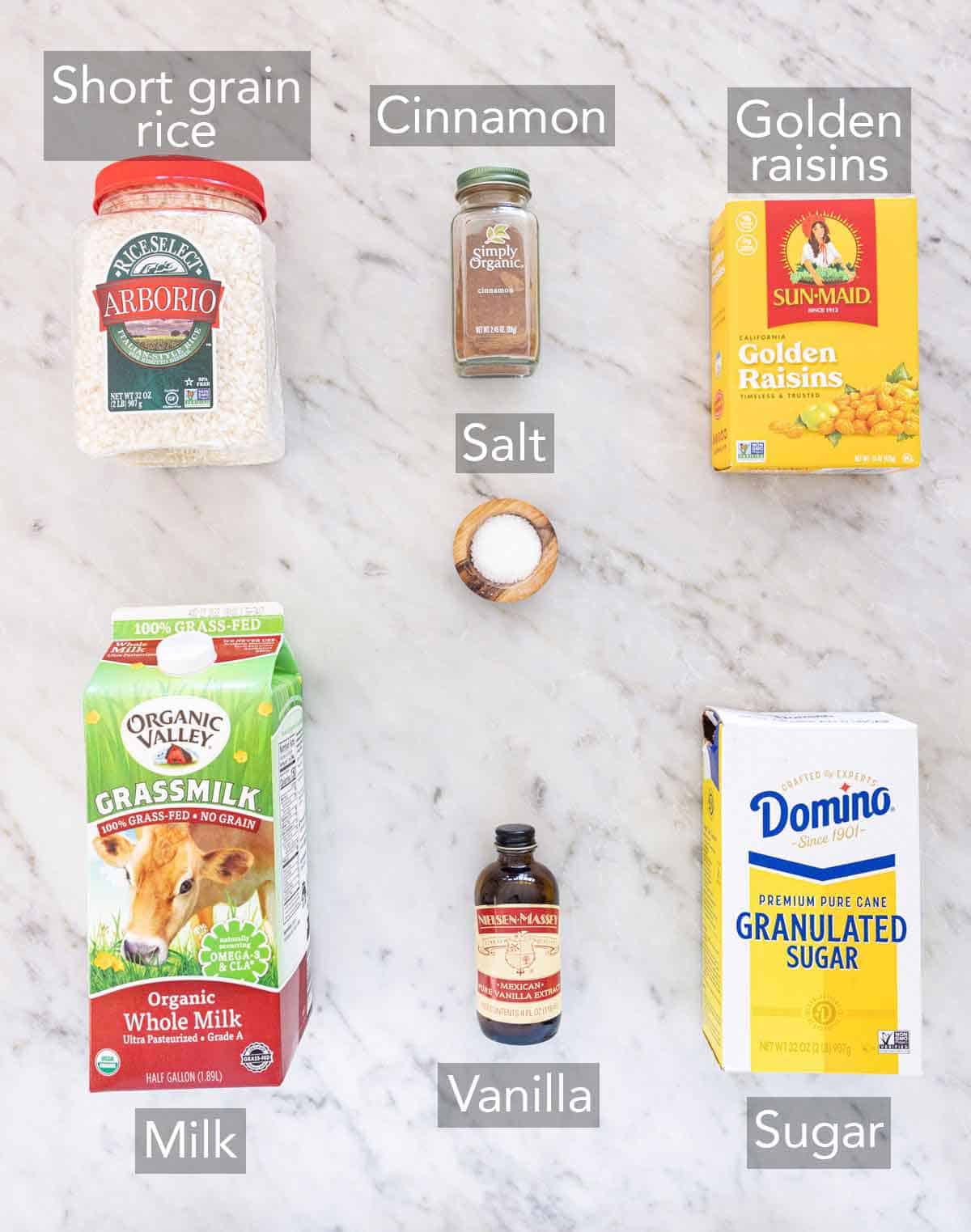
Milk — I highly recommend using whole milk for the best rice pudding. Using lower fat milk will lead to a less rich, creamy, and thick pudding.
Sugar — I use white sugar, but brown sugar also makes for a delicious sweetener. Feel free to adjust the sugar if you’d like your pudding more or less sweet.
Rice — you can use any type of white short-grain rice. Some great options are arborio rice, sushi rice, and sticky rice. Avoid using longer grain rice, as long-grain rice holds its shape better, which isn’t ideal for rice pudding.
Raisins — I love golden raisins but if you’re not a raisin fan in your pudding, leave them out.
Vanilla — for the best flavor, I recommend using real vanilla extract instead of artificial vanilla extract.
How to Make Rice Pudding
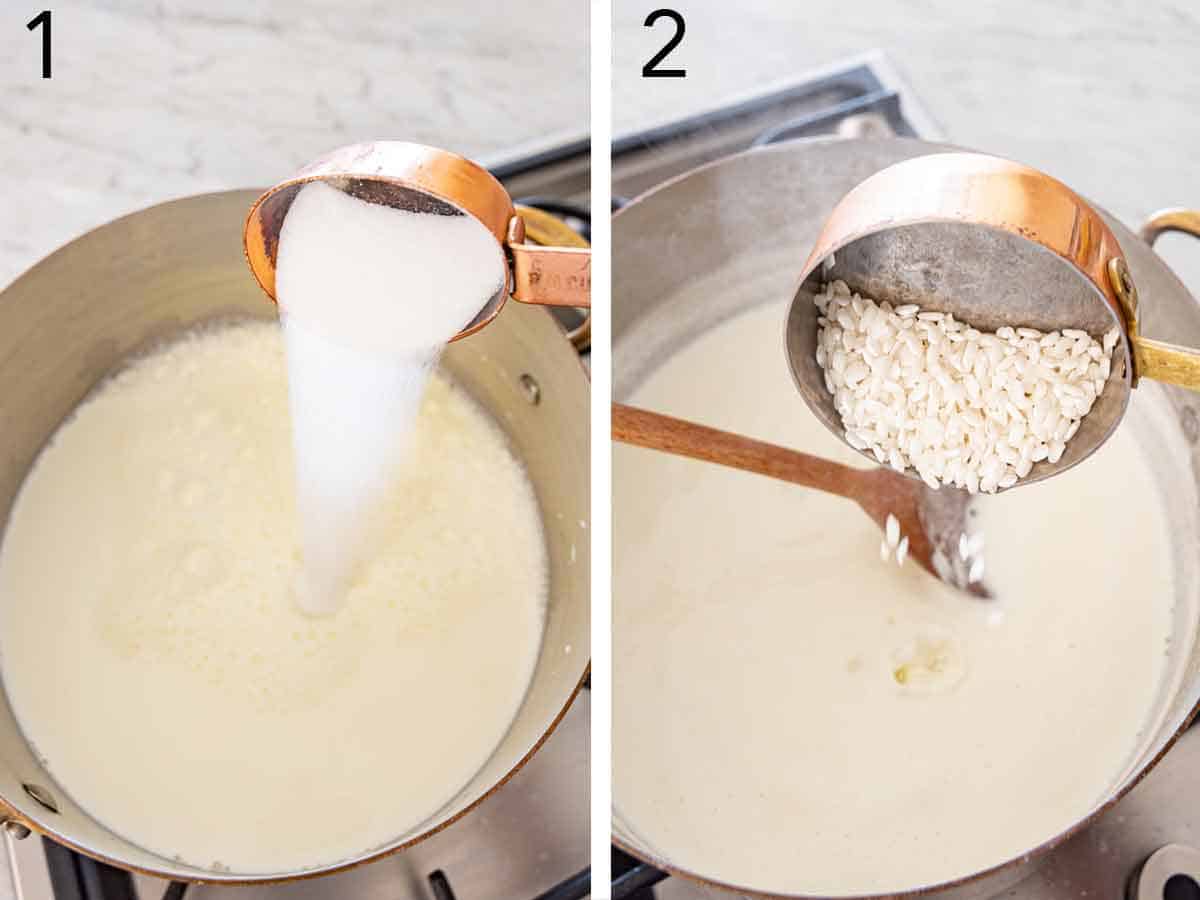
1. In a large saucepan, stir the milk, sugar, and salt. Bring to a boil over medium-high heat.
2. Stir in the rice. Reduce the heat to low and partially cover. Simmer the mixture, frequently stirring, until the rice is tender and the mixture has thickened.
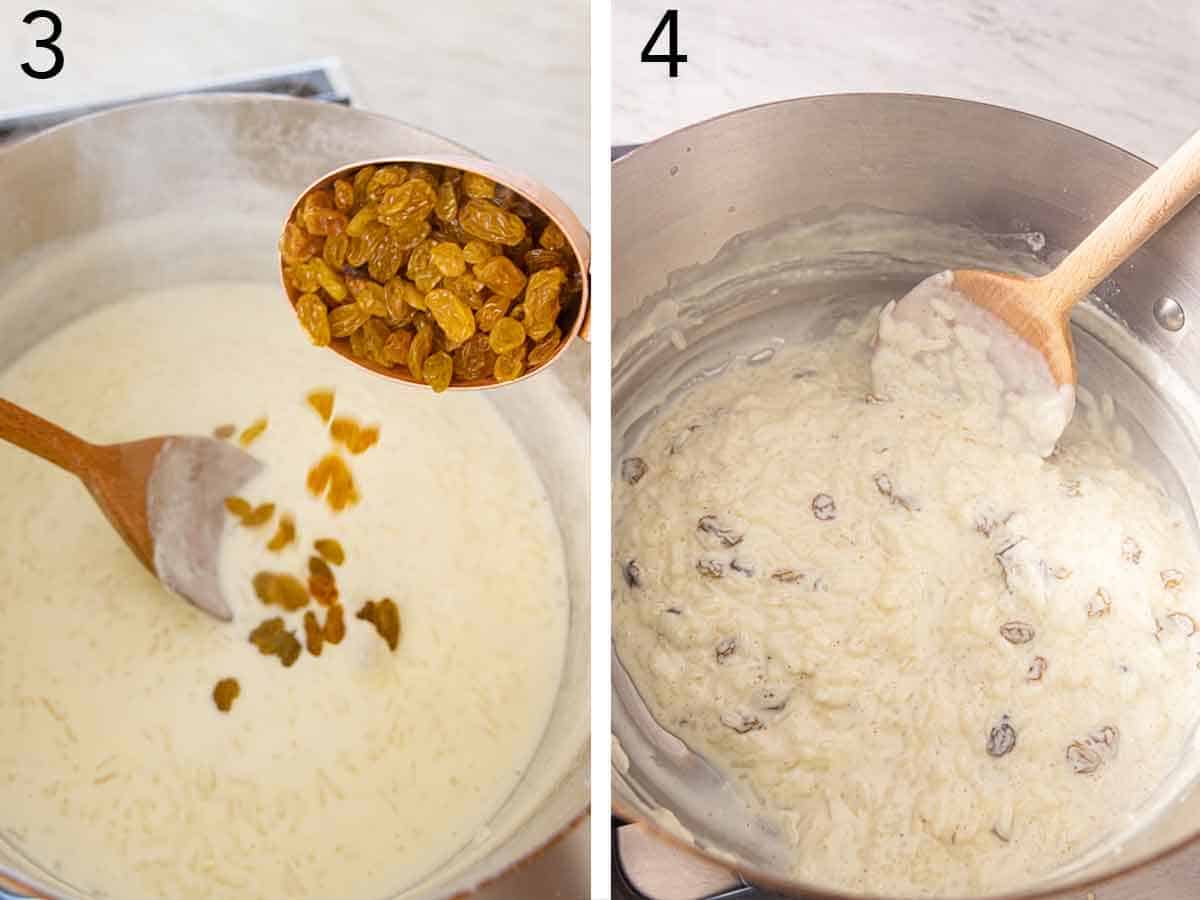
3. Stir in the raisins (if using), vanilla, and cinnamon to taste.
4. Continue cooking until desired thickness. Serve warm or let cool to room temperature. Top the rice pudding with extra cinnamon, if desired.
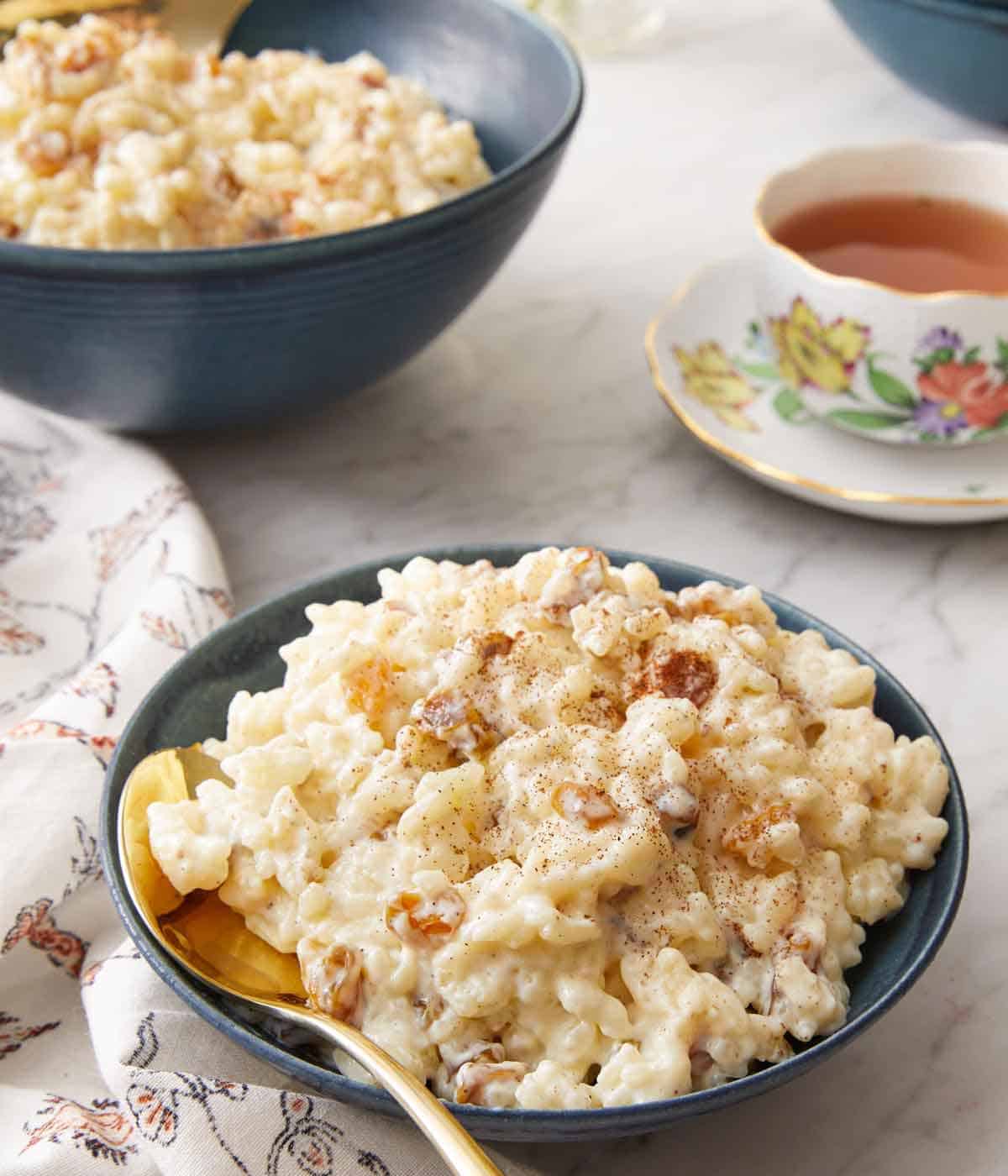
Pro Tips for Making This Recipe
- You can spice up the pudding however you like! Add some orange zest and ground cardamom for a delicious and easy holiday dessert. Swap the raisins for dried cranberries, apricots, or apples.
- Short-grain rice is best to use in this recipe as it is starchier and holds its shape well. If you don’t have any, you can definitely use what you have in the pantry! However, I wouldn’t recommend brown rice.
- Make sure to keep the temperature low. If the heat is too high and the pudding comes to a boil, you’ll risk the pudding curdling.
- Remember that the rice pudding will continue to thicken as it cools. Careful not to overcook, or you’ll end up with too thick pudding.
- While simmering, keep an eye on the rice mixture and keep stirring. If it’s left alone for too long, the rice will scorch on the bottom of the pan.
- Instead of vanilla extract, you can use vanilla bean paste if you have some on hand.
- I suggest rinsing the rice beforehand to remove any dirt, dust, or debris on the grain.
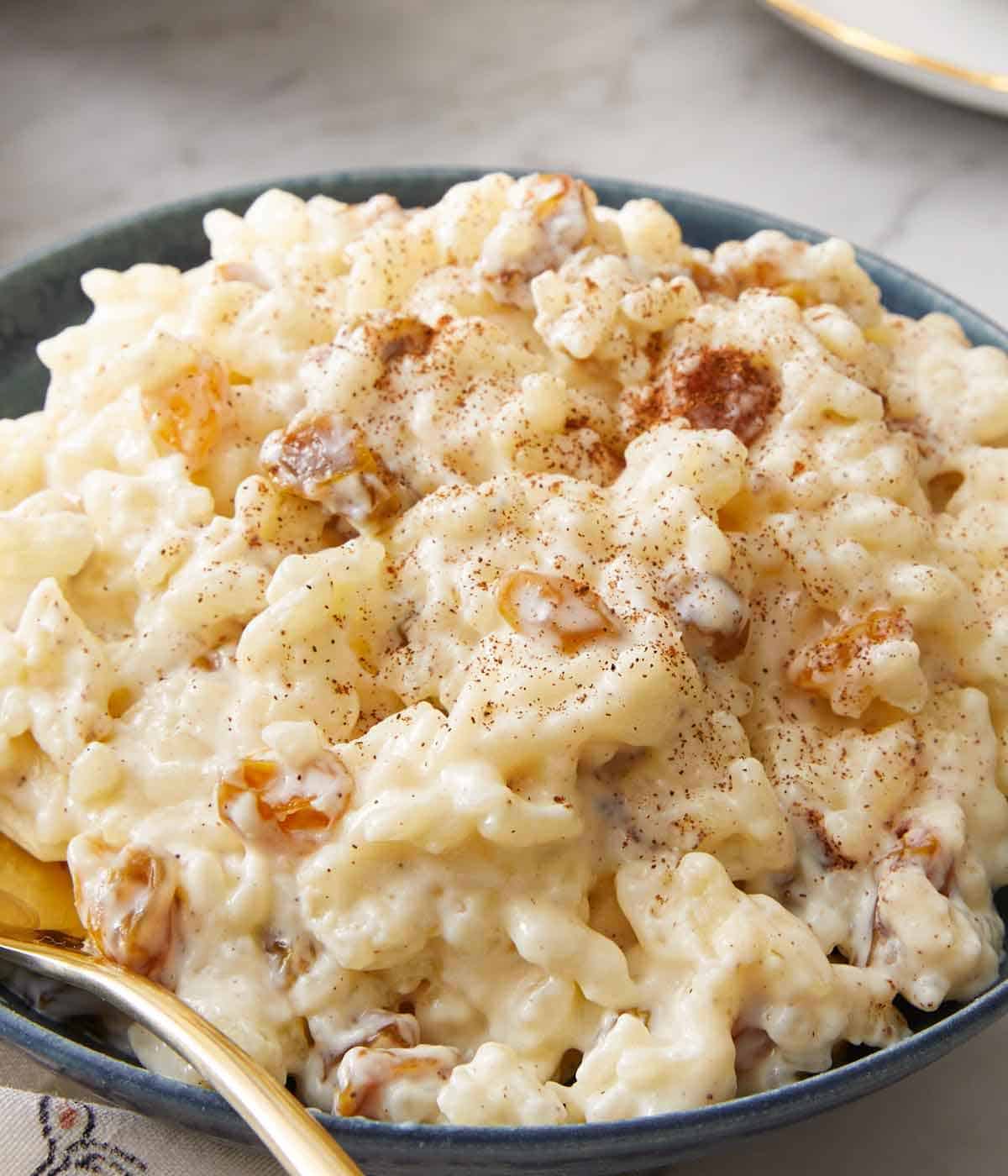
Frequently Asked Questions
If you have leftover cooked rice, it makes for a great shortcut. As the rice is already cooked, you’ll need less liquid. I would suggest using only half the milk to start, then adding more as needed. You can also simmer the pudding for a shorter time.
If you require non-dairy milk, you could swap cow’s milk for a different milk. However, keep in mind that using another type of milk will affect the thickness and creaminess of the rice pudding. Thick coconut milk is an excellent alternative as it’ll still add richness and creaminess while being dairy-free.
Rice pudding will keep well in the fridge for 3 to 4 days in an airtight container. If you want to reheat leftovers, you can stir in a tablespoon or two of milk to loosen the pudding on the stovetop if it has become too thick in the fridge.
This recipe freezes wonderfully! Cool to room temperature, then store the rice pudding in a freezer-safe bag or container in the freezer for up to 2 months. Thaw in the fridge overnight before enjoying.
This is an easy fix! If your pudding is too thick, add a few tablespoons of milk to the pot to thin out the pudding. If the pudding is too thin, simply keep simmering until it has thickened to your liking.
If you’ve tried this Rice Pudding recipe, then don’t forget to rate the recipe and let me know how you got on in the comments below, I love hearing from you!
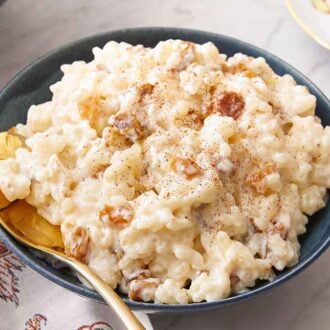
Rice Pudding
Equipment
- Large saucepan
Ingredients
- 4½ cups whole milk (1L)
- ¼ cup sugar (50g)
- Pinch of salt
- ¾ cup uncooked white rice (short grain) (135g)
- ⅓ cup golden raisins (optional) (55g)
- 1 teaspoon vanilla extract
- Ground cinnamon
Instructions
- In a large saucepan, stir together the milk, sugar, and salt. Bring to a boil over medium-high heat. Stir in the rice.
- Reduce the heat to low, and partially cover. Simmer, stirring frequently, until the rice is tender and the mixture has thickened, about 25 to 30 minutes.
- Stir in the raisins if using, vanilla, and cinnamon to taste. Continue cooking until desired thickness. (Keep in mind the pudding will thicken as it cools. If it gets too thick for your liking, thin with a bit more milk.)
- Serve warm or let cool to room temperature, then refrigerate in an airtight container and serve cold. Top with extra cinnamon, if desired.
Notes
- You can spice up the pudding however you like! Add some orange zest and ground cardamom for a delicious and easy holiday dessert. Swap the raisins for dried cranberries, apricots, or apples.
- Short-grain rice is best to use in this recipe as it is starchier and holds its shape well. If you don’t have any, you can definitely use what you have in the pantry! However, I wouldn’t recommend brown rice.
- Make sure to keep the temperature low. If the heat is too high and the pudding comes to a boil, you’ll risk the pudding curdling.
- Remember that the rice pudding will continue to thicken as it cools. Careful not to overcook, or you’ll end up with too thick pudding.
- While simmering, keep an eye on the rice mixture and keep stirring. If it’s left alone for too long, the rice will scorch on the bottom of the pan.
- Instead of vanilla extract, you can use vanilla bean paste if you have some on hand.
- I suggest rinsing the rice beforehand to remove any dirt, dust, or debris on the grain.


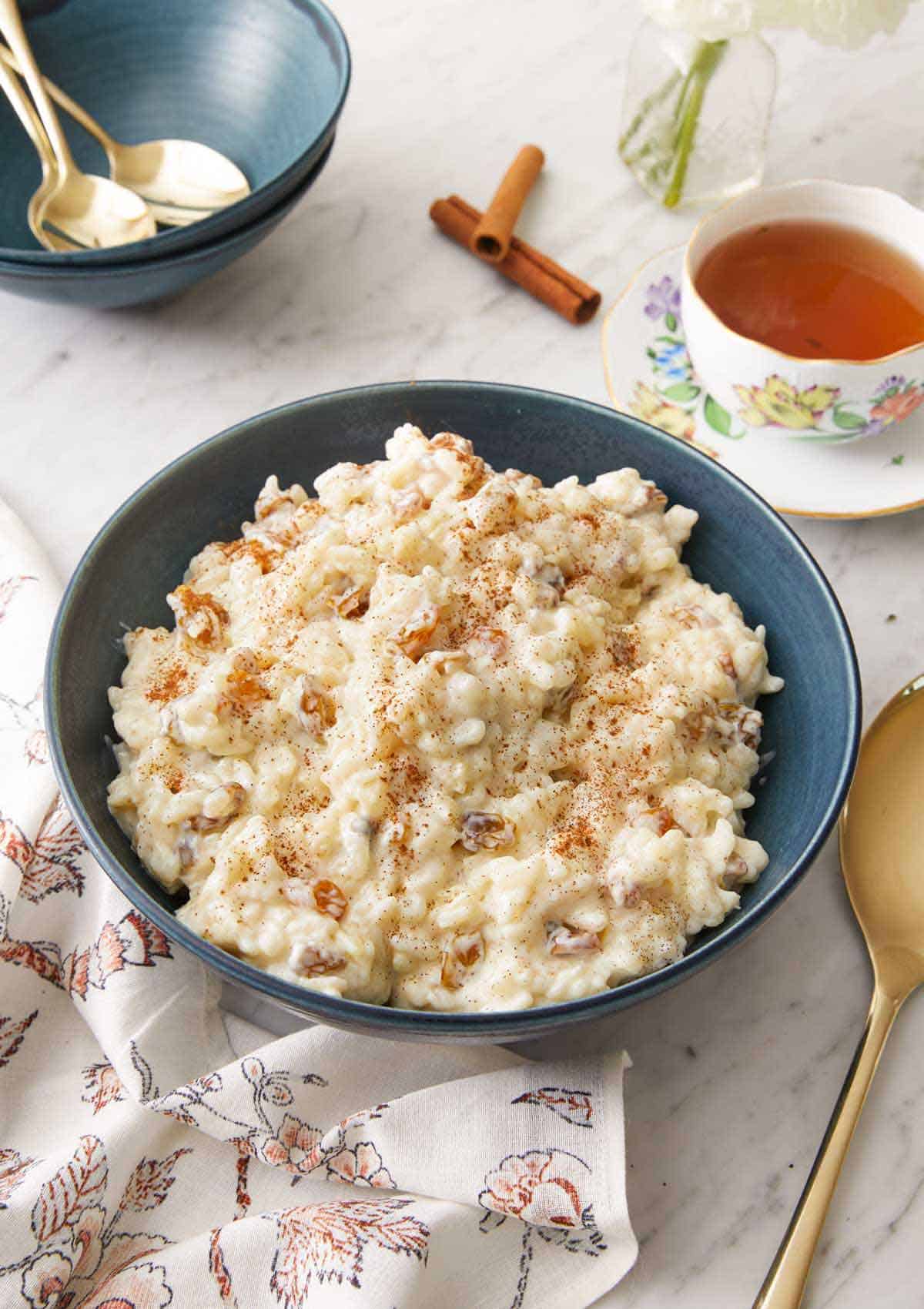
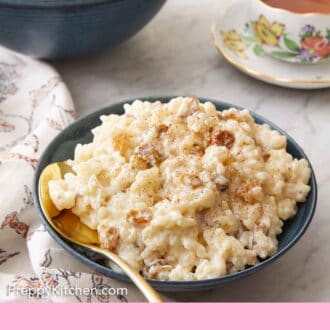
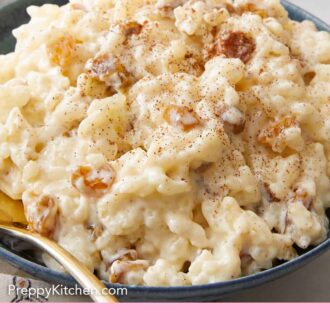
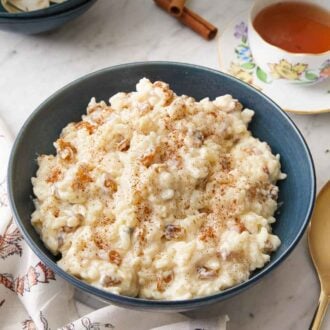
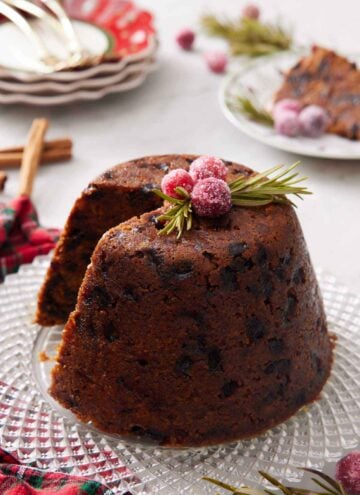
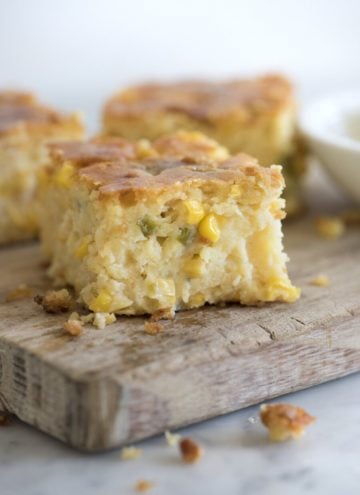




Leave a Reply